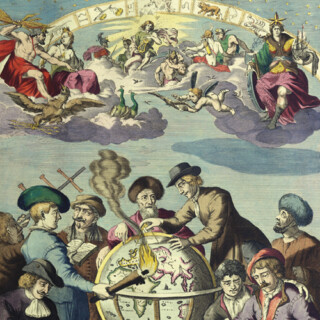Dominick Serres

The Serres family of French painters and draughtsmen, active in England. Dominick Serres had at least five children, including Dominick M. Serres, RA (c1761–after 1804) and John Thomas Serres (1759-1825).
Dominick Serres ran away from Germany and found his way to Spain where he joined, as a seaman, a ship bound for South America. In the course of time he learnt the art of seamanship and became master of a vessel trading to Havana. During the war of 1752 he was taken prisoner by an English frigate and brought to England. Released on parole, he began to earn a living as an artist and liked the country so much that he remained. Demand in the 1770s and 1780s for paintings recording the naval history of the American War of Independence brought from Serres a “characteristically committed but uninspired response, for example Forcing a Passage on the Hudson River. His interpretations of such events were nonetheless patriotic enough for him to be appointed Marine Painter to George III in 1780” (Stephen Deuchar).
On the establishment of the Royal Academy in 1768, Dominick was chosen as a foundation member and became its Librarian in 1792.
All four of Serres’s children became artists in their own rights. His son John Thomas was appointed marine draughtsman to the Admiralty in 1793, and succeeded his father to the office of Marine Painter to George III in the same year. Allegedly, his duties included spying on the French and sketching coastal installations along their coasts.
His marriage to the “flamboyant and allegedly spendthrift landscape painter Olivia Wilmot brought about personal and financial difficulties by 1808, which hastened the first of his several trips to Scotland and probably the dispersal of the collection of Old Master and contemporary drawings that he had inherited from his father. He was imprisoned in Edinburgh for debt in 1818, which no doubt contributed to the King’s refusal to allow him to act as official draughtsman on the royal visit to Scotland in 1822; he nevertheless produced a set of large and well-crafted watercolours recording the event, before dying in debtors’ prison” (Deuchar).







